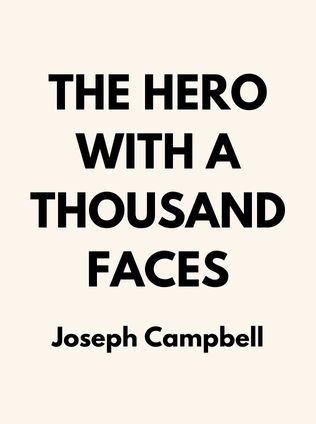
The Hero with a Thousand Faces
By Joseph Campbell
Published 06/1949
About the Author
Joseph Campbell, a towering figure in the study of mythology and comparative religion, devoted his life to exploring the rich tapestry of human stories and myths that span across cultures and ages. Born in 1904, Campbell was deeply influenced by the myths of Native Americans during his early years, which kindled a lifelong passion for mythology. His academic journey took him through the halls of Columbia University, where he studied literature, earning a bachelor's and master's degree. However, it was his extensive study of the works of Carl Jung, Sigmund Freud, and James Joyce that profoundly shaped his approach to mythology.
Campbell's magnum opus, The Hero with a Thousand Faces, published in 1949, introduced the concept of the "monomyth," or the hero's journey, a universal narrative pattern found in myths across cultures. This work has had a lasting impact not only on the study of mythology but also on modern storytelling, influencing filmmakers, writers, and artists. Campbell's ability to synthesize complex ideas from psychology, religion, and literature into a cohesive and accessible framework made him a beloved and influential figure in the humanities. His legacy continues to inspire those who seek to understand the deeper meanings embedded in human stories.
Main Idea
The Hero with a Thousand Faces delves into the universal structure of the hero's journey, a narrative archetype that recurs in myths across cultures and time periods. Campbell argues that despite the vast diversity of human cultures, the stories we tell share a common structure. This "monomyth" involves a hero who embarks on an adventure, faces and overcomes challenges, undergoes a transformation, and returns with a boon to share with the world.
Campbell explores how this universal narrative serves as a metaphor for the psychological journey of personal growth and self-discovery. Through the hero's trials, we see reflections of our own struggles and triumphs. The hero's journey is not just a story; it is a mirror of the human experience, reflecting our deepest fears, desires, and aspirations.
Table of Contents
- The Monomyth: The Hero's Journey
- The Call to Adventure
- The Road of Trials
- The Ultimate Boon
- The Return of the Hero
- Creation and Destruction Myths
- The Psychological Journey
- The Function of Mythology Today
The Monomyth: The Hero's Journey
The central theme of The Hero with a Thousand Faces is the concept of the monomyth, also known as the hero's journey. Campbell illustrates how this narrative pattern appears in the myths of various cultures, from the ancient Egyptians and Greeks to the Native Americans and the Maori of New Zealand. Despite the differences in cultural context, these myths share a common structure, which Campbell breaks down into three main stages: separation, initiation, and return.
The hero begins in the ordinary world but is called to embark on a journey that takes them into a realm of the unknown. This "call to adventure" often comes from a messenger or supernatural being, urging the hero to leave behind their familiar world. Initially, the hero may refuse the call, driven by fear or a sense of unworthiness. However, once the call is accepted, the hero crosses the threshold into the unknown, where they encounter trials and tribulations that test their strength, resolve, and character.
As Campbell writes,
Sign up for FREE and get access to 1,400+ books summaries.
You May Also Like
The Subtle Art of Not Giving a F*ck
A Counterintuitive Approach to Living a Good Life
By Mark MansonRich Dad Poor Dad
What the Rich Teach Their Kids About Money - That the Poor and Middle Class Do Not!
By Robert T. KiyosakiHow To Win Friends and Influence People
The All-Time Classic Manual Of People Skills
By Dale CarnegieFreakonomics
A Rogue Economist Explores the Hidden Side of Everything
By Steven D. Levitt and Stephen J. Dubner



















